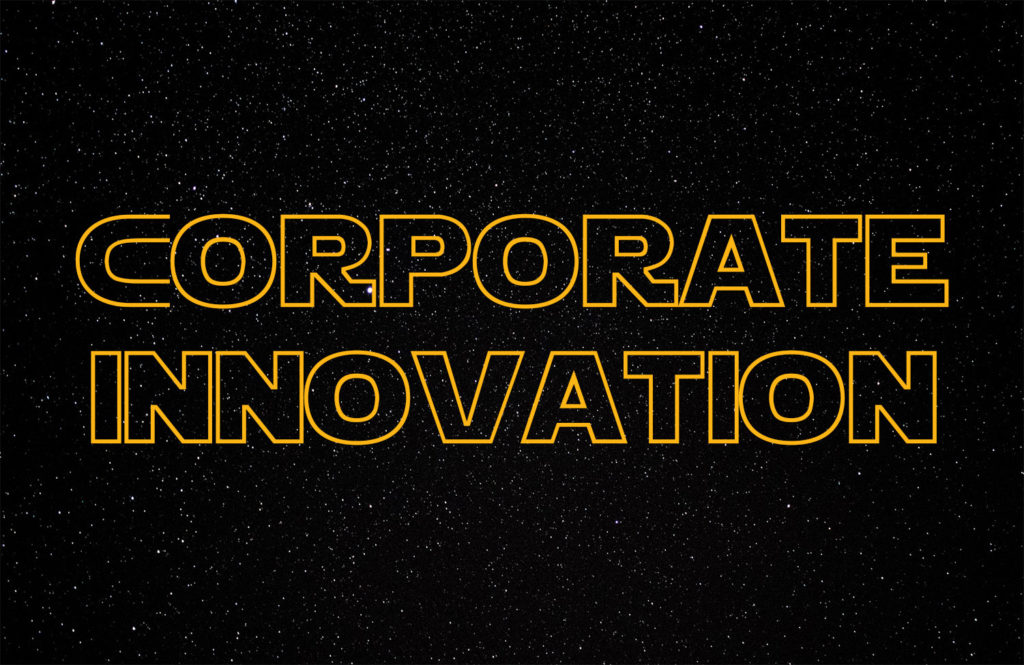Corporate Innovation: Five Lessons from Star Wars
By Shomit Ghose | March 31, 2020

Star Wars: mind-candy entertainment or a set of essential teachings for business leaders? Happily, it’s both. The sci-fi series is a great illustration of the entrepreneurial journey, while also illustrating (who knew?) academically-proven best practices for achieving business success. The case for binge-watching Star Wars is particularly apt in today’s corporate environment where competition from innovative companies is disrupting industries everywhere.
1. Think Big
The most important lesson in Star Wars is the need to think big. The series’ intrepid rebels never set small goals before themselves: it’s always to destroy the latest release of the Death Star. For start-ups this is an important lesson. There’s little merit in thinking small and winning small. Success lies in thinking big. Big companies too must think big by pursuing innovation that is disruptive to their existing business (i.e., revenues) and not just incremental to their technology. Relevance lies in the former, senescence in the latter.
2. Find the Wise
The biggest gifts bestowed by Yoda and Obi-Wan Kenobi weren’t material ones. The biggest gifts were their wisdom. The same holds in entrepreneurship. With start-ups, for example, the evidence has shown that “VCs’ on-site involvement with their portfolio companies is an important determinant of innovation and success” (Bernstein, Giroud and Townsend 2016). More than the money, what every entrepreneurial project needs is experienced guidance; money is a commodity, wise guidance is not.
Wisdom, of course, is a function of experience, not “track record”. Baseball player Lefty Gomez’s famous apothegm “I’d rather be lucky than good” is easily countered by “Luck runs out, good doesn’t”. The “track record” of any wise advisor under consideration should be discounted for any effects of blind luck (Liu, Denrell 2018, Pluchino, Biondo and Rapisarda 2018) in their accomplishments. Wisdom is transmissible, but luck is not. Find a Yoda or Obi-Wan who’s acquired their wisdom the hard way: by doing.
3. Diversity
An examination of any Star Wars poster will show a wonderfully diverse collection of heroes: young, old, male, female, black, white, green, furry, metallic, you name it. What drives innovation? It’s just the sort of diversity and cognitive diversity that populates Star Wars’ cast. Academic studies have found that diversity and tolerance are correlated with both creativity and higher regional incomes (Florida, Mellander and Stolarick 2009). An endless body of work (Phillips, Northcraft and Neale 2006, Woolley, Chabris, Pentland, Hashmi and Malone 2010, Dezsö and Ross 2011, Gompers, Mukharlyamov and Xuan 2012, Freeman and Huang 2014, Nager, Hart, Ezell and Atkinson 2016) continues to show that the diversity in thought stemming from a diversity of backgrounds is what drives insight and innovation.
4. Compact Teams
Even casual fans can name all of the heroes of any particular Star Wars movie specifically because the list of good guy characters is so short. These small teams are effective because they’re in the Goldilocks Zone: big enough to deliver cognitive diversity, small enough to deliver unity of execution. One of the reasons cited behind Amazon’s wild success is its adherence to Jeff Bezos’ famous two-pizza rule. I.e., that no team should be so big that it cannot be fed by two pizzas. The two-pizza rule would certainly encompass any set of heroes from any Star Wars film.
In a study published in Nature (Wu, Wang and Evans 2019), an analysis of more than 65 million papers, patents and software products spanning the period 1954–2014 demonstrated that smaller teams tended to disrupt science and technology with new ideas and opportunities, whereas larger teams tended to develop existing ones. Want to innovate? Put together some two-pizza sized teams.
5. The Good Guys Win
Spoiler alert: the good guys triumph at the end of the Star Wars series. Certainly, humans find it comforting and right that the good guys triumph over the bad guys. Apparently good triumphs over evil in the business world too. Writing in the Harvard Business Review, Emma Seppälä and Kim Cameron (2015) surveyed a number of studies to find “that not only is a cut-throat [corporate] environment harmful to productivity over time, but that a positive environment will lead to dramatic benefits for employers, employees, and the bottom line”. They concluded that “when organizations develop positive, virtuous cultures they achieve significantly higher levels of organizational effectiveness — including financial performance, customer satisfaction, productivity, and employee engagement”. Take that, Darth Vader.
Awaken the Force
The process of innovation and disrupting your business is hard. When companies are doing well, disruption isn’t seen as being necessary. When they’re doing poorly, companies are too panicked to do anything other than focus on survival. But business’ landscape is ever-evolving and no company is immune from obsolescence. So, paradoxically, all companies need to disrupt their own business explicitly while they’re doing well.
Whether small start-up or large multi-national, disruptive innovation is existential and must be continuous. Start-ups cannot disrupt through anodyne products or small markets, and large companies cannot disrupt without decoupling their desire for innovation from their attachment to existing revenues. Awaken your force. Disruptive business models can be discovered and developed by teams following the Star Wars model with: big goals; small, cohesive teams; a diversity of talent; experienced guidance; ethics; boldness and elan.
Now order a couple of pizzas and call that farm kid from Tatooine.
